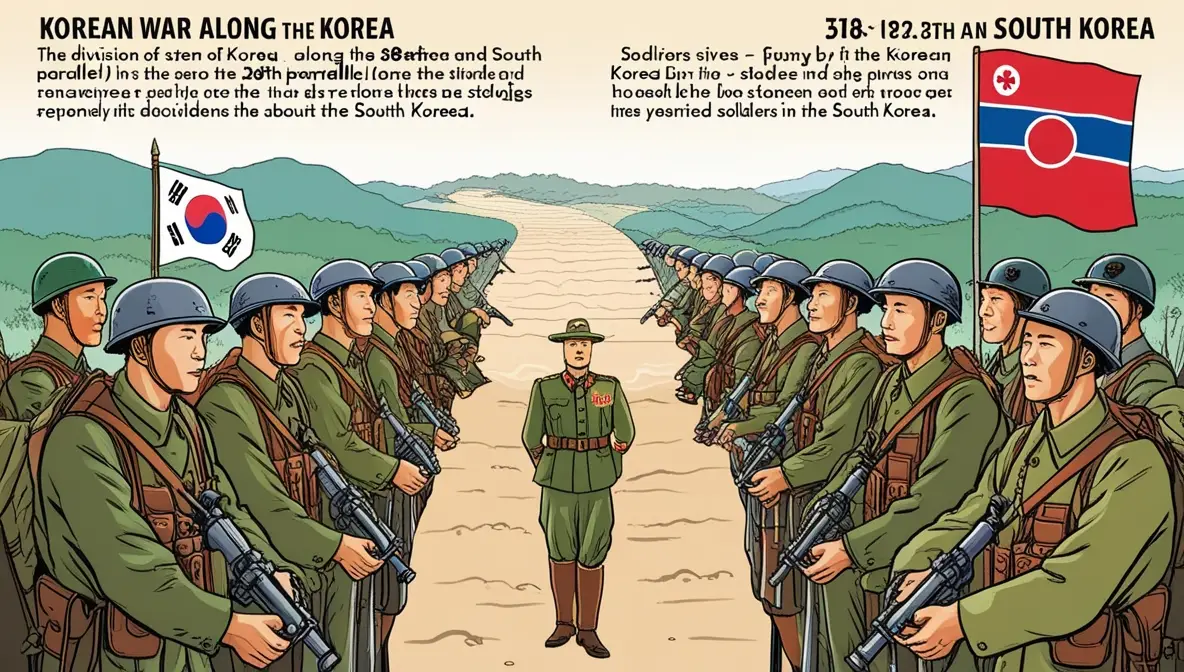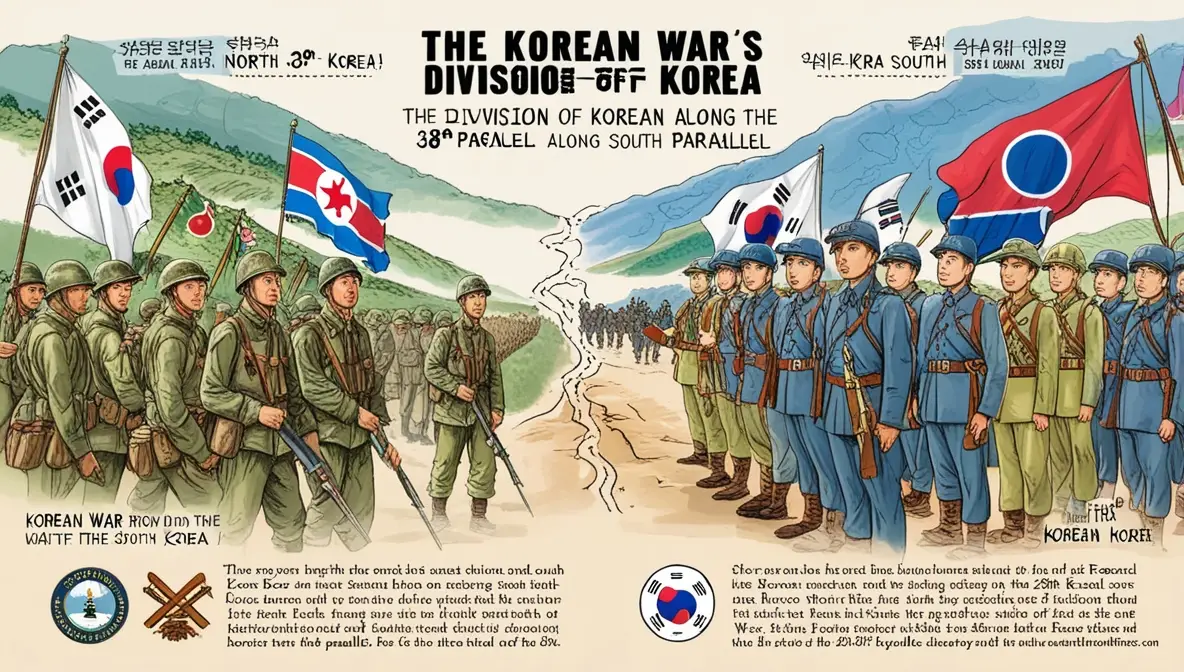Korean War
The Korean War: A Historical Overview
Next Korean War: June 25, 2025
The Korean War began on June 25, 1950, when North Korea invaded South Korea. This invasion marked the first military engagement of the Cold War and lasted until July 27, 1953.
The United States entered the conflict in July, supporting South Korea as part of its broader strategy to combat the spread of communism.

[su_box title=”Korean War – Next years” box_color=”#fb0400″]
- Wednesday, June 25 2025
- Thursday,June 25 2026
- Friday,June 25 2027
- Sunday, June 25 2028
[/su_box]
Korean War History
Following the end of World War II, Korea, previously under Japanese control, was divided between the United States and the Soviet Union. In 1945, the peninsula was split at the 38th parallel, with the U.S. occupying the south and the Soviets taking the north.
This division led to the formation of two distinct states. South Korea was governed by anti-communist Syngman Rhee, backed by the U.S., while North Korea was led by communist dictator Kim Il Sung, supported by the Soviets. Both leaders aimed to reunify the peninsula under their respective regimes.
On June 25, 1950, approximately 75,000 North Korean soldiers crossed the 38th parallel into South Korea, raising alarms in the U.S. about a potential global spread of communism. American officials recognized the necessity of military intervention, framing the conflict as a battle between good and evil in the Cold War context.
Initially, the U.S. military adopted a defensive strategy, focused on repelling the North Korean forces. However, the North Korean army, being well-armed and trained, advanced rapidly. In response, President Truman shifted to an offensive strategy aimed at liberating North Korea from communism.
As American forces pushed into North Korea, China grew concerned about a potential U.S. invasion of its territory. To counter this threat, China sent troops to support North Korea.

Peace Talks
President Truman sought to avoid a conflict with China, fearing it could escalate into a war involving the Soviets in Europe, leading to unnecessary casualties. Consequently, he replaced military leaders advocating for a confrontation with China.
In July 1951, with new generals in place, Truman initiated peace talks with North Korea in Panmunjom. However, negotiations stalled over the issue of war prisoners. While North Korea and China favored their release, the U.S. opposed it.
After two years of discussions, an armistice was finally signed on July 27, 1953, ending the Korean War. The agreement granted South Korea an additional 1,500 square miles of territory near the 38th parallel and established a demilitarized zone (DMZ) between the two nations.
Korean War Timeline
- 1945: Korea is divided into North and South along the 38th parallel.
- June 25, 1950: North Korean army invades South Korea, igniting the Korean War.
- June 30, 1950: The United States joins the war in support of South Korea.
- October 25, 1950: China enters the war, supporting North Korea.
- July 27, 1953: An armistice is signed, concluding the Korean War.
Aftermath of the Korean War
The conflict resulted in approximately five million deaths, including many civilians. The U.S. military suffered 40,000 casualties, with around 100,000 wounded.
To honor those who served, the Korean War Veterans Memorial was established at the National Mall in Washington, D.C.
Interesting Facts About the Korean War
- An estimated 7,800 American soldiers are still listed as missing from the Korean War, according to a 2019 report.
- About 16 countries participated in the conflict, including Great Britain, Canada, France, Australia, and Turkey.
- Surprisingly, 21 captured American soldiers chose to remain in China after the war.
- Renowned artist Pablo Picasso created the painting “Massacre in Korea” in 1951, depicting the atrocities committed in Sinchon, North Korea.
By understanding the complexities of the Korean War, we gain valuable insights into the historical tensions that continue to shape the Korean Peninsula today.


